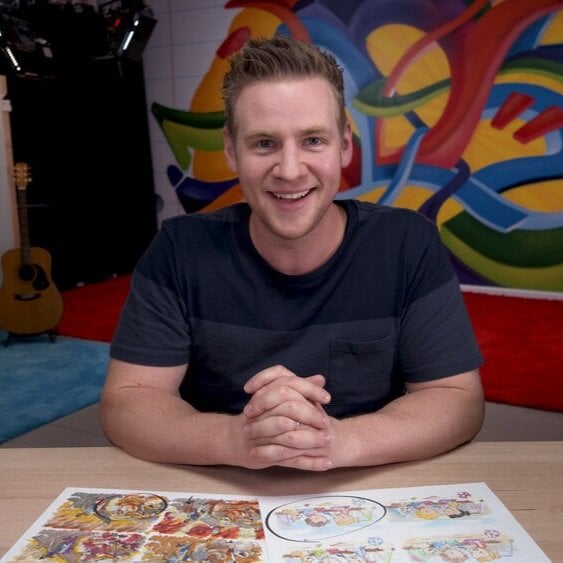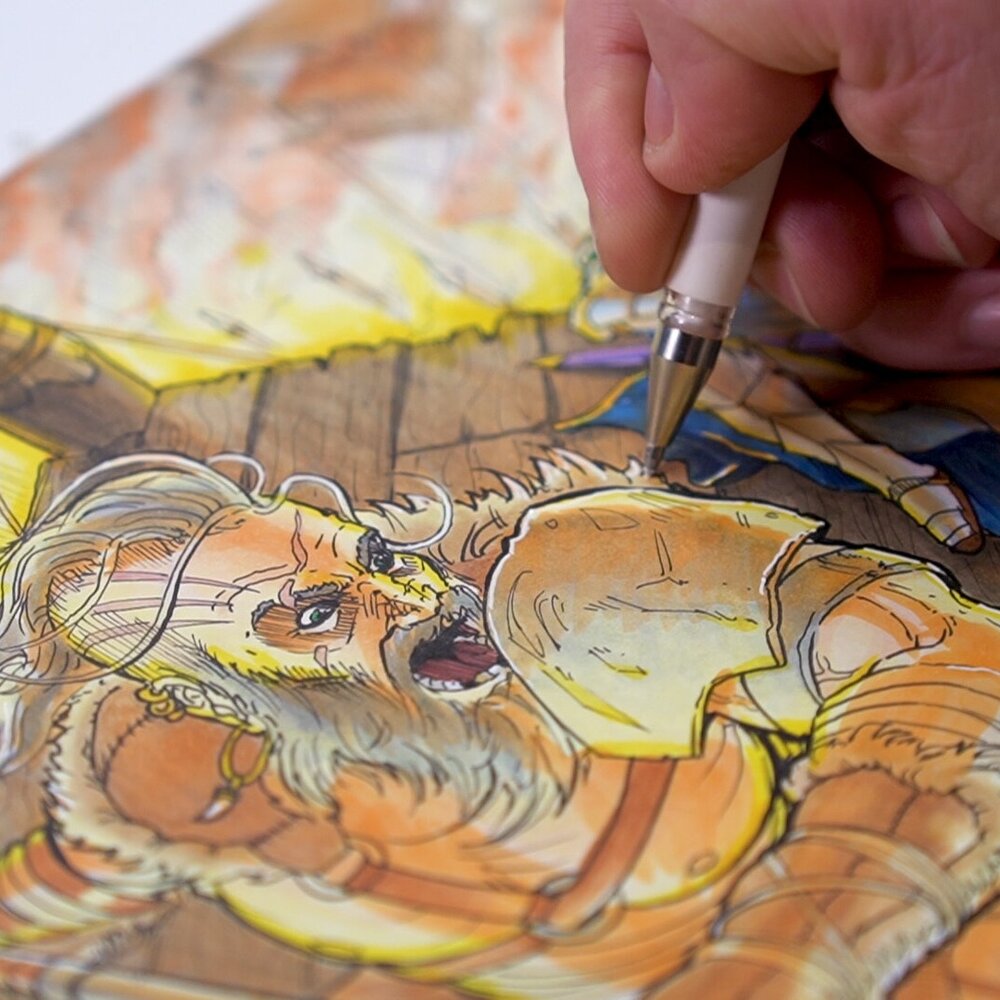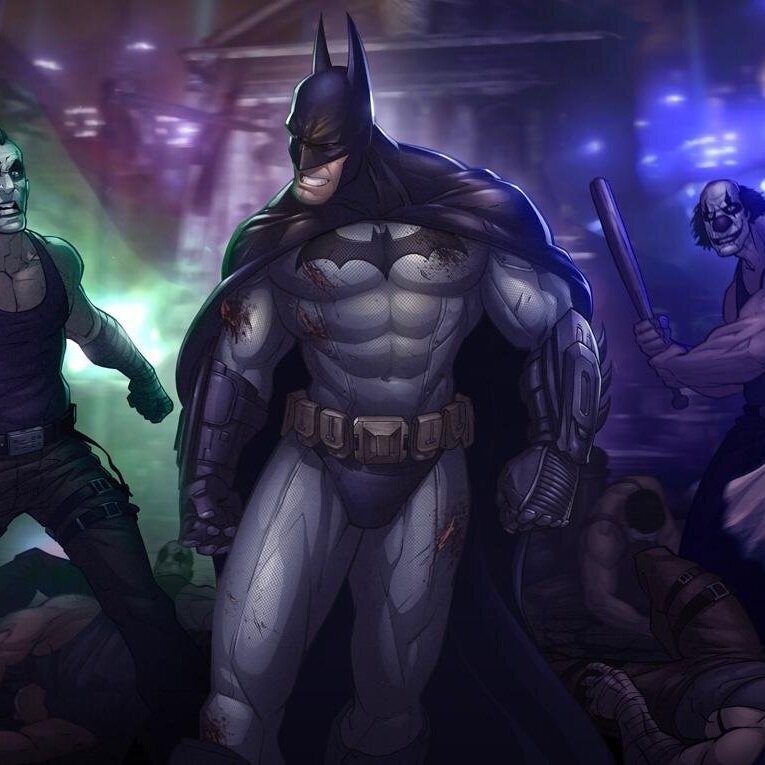Updated: May, 13 2024
How to Design a Video Game Character
Discover how to design your own video game character, from mastering character design to adding motion and more.
A number of crucial aspects make up a video game. Of course, there’s the gameplay itself, the game world, and the audiovisual presentation. The list goes on and on. But one of the most important items on that list is the characters. A video game may have a fun plot and stunning graphics, but with cookie-cutter characters, it’s going to lack the spirit and originality that games with well-thought-out characters have.
Think about it this way: Everyone knows who Mario is, whether they’ve played Super Mario Bros or not. Mario is an iconic character, and he’s a big part of why new Mario games have kept debuting for so many years.
Character design is a crucial part of the video game puzzle. The job requires talent, a specialized skill set, a healthy imagination, and good intuition. To be successful, a character designer needs to create captivating art, and convince players that the characters belong in their respective game worlds. Characters must fit neatly into those worlds, while standing out as individuals with distinct personalities. Designs must then reflect those personalities, as well as the characters’ physical abilities.
So who undertakes the complex task of designing video game characters? And how do they do it? This guide will take you through the ins and outs of the character-design profession, from getting into the business to designing a character from the ground up.

Curious about Character Design?
Get started with our Ultimate How-To Guide to Character Design with YouTube Star Jazza Brooks.
Who are video game character designers?
Video game design is a growing field. In 2016, the United States Bureau of Labor Statistics stated that the number of available jobs for multimedia artists and animators should increase by about 8% by 2026. The BLS doesn’t separate out specific statistics for game designers, but Sokanu (a job platform) puts the number of video game designers in the US at around 233,000.
Salaries for a game designer generally start at around $40,000, and can climb upwards of $130,000. The high pay grade comes with game designers’ unique skill set. It isn’t an easy job, and it takes years of practice to perfect.
Becoming a game designer
When figuring out how to become a game designer, it’s best to start with education. Most game designers, especially character artists, hold undergrad degrees from art schools. Graphic design and traditional art courses—coupled with animation and computer programming classes—should point aspiring character artists in the right direction. According to The Princeton Review, rankings of top video game design schools often include Carnegie Mellon, Hampshire College, the University of Southern California, Savannah College of Art and Design, and DigiPen Institute of Technology.
In addition to computer smarts and artistic ability, character designers need to be able to work creatively with others, and adhere to deadlines. Video game characters aren’t designed in a vacuum. Character designers need to work with concept artists, who get the ball rolling by planning a game’s overall imagery. They also need to collaborate with the artists responsible for other visual aspects of the game, sound designers, animators, and a slew of other creatives—not to mention the artists responsible for the game’s budget and marketing.
There are many video game designer jobs out there, and holding one of them down means that you need to know about related jobs.
Though game designers are often depicted as solo artists who work from the comfort of their own homes, collaboration and networking are important aspects of the job. If you’re an aspiring video game artist, you might want to consider putting some of your designs (yes, even ones you’ve done just for fun) up on Tumblr, Instagram, and more art-specific social platforms (such as Dribbble, Behance, and DeviantArt).
Connect with other artists and game designers by commenting on their work and messaging them. You never know—one Instagram comment could lead your next career, or help you find your ideal design partner.

Want to start designing your own characters?
Check out Mastering Illustration with Jazza: Sketching, Inking and Coloring Essentials.
What skills do video game character designers need?
Character designers need to have technical skills in both computer-design programs and visual art. Some animation and coding skills don’t hurt, but they’re not as necessary to the profession.
Visual art
When it comes to visual art, character designers should have a solid grasp of anatomy. Of course, game worlds can be fictional, and designers are certainly encouraged to get creative.
But in order for characters to move around and function in the game world, they need to have physically sound proportions. A character whose head would, in reality, be far too large for its body will bop around clumsily, while a character whose arms are the length of its torso will simply look off to players.
Not only should character designers have sound technical specs, they should also have enough imagination to create characters that aren’t just cookie-cutter “sexy elves” or “heroic warriors.” In other words, designers need to be able to imbue their characters with life.
Design programs
If character designers want to be taken seriously in their field, they must master the obvious programs like Adobe Illustrator and Photoshop. Both are general illustration programs that have adequate tools for creating any character.
For programs that are best attuned to digital sculpting, character designers turn to the likes of Mari and ZBrush, which bring together 3D modeling and painting. Poser Pro creates highly realistic 3D characters, and Maya works best for rigging and animation.
The design process
When you start thinking about how to design a character, think generally before narrowing in on specific traits. If you start with a detailed illustration, it can box you in too early in the process.
Perhaps you design a fairy, and later decide that he needs to be physically intimidating. If so, it will be a lot harder to continue to work within your original design. It’s much easier to come up with traits, then mold a character accordingly.
Tell a backstory
Start with an idea for a character. Is he a hero type, a trickster, or someone with secrets? From there, you can begin to formulate your character’s backstory. If you give characters historical and familial context, it will help shape their motivations, and inform how they respond to their environments. The character’s backstory can (and ideally should) cleverly tie into the overall story of the game world, which gives the character a purpose that connects to the game’s plot.
Now that the character has a past, it will be much easier to make that character feel authentic. Say your character was traumatically betrayed during her childhood. This event could very well lead to a less-than-trusting attitude. Or did your character escape his home with only the clothes on his back? Then maybe he’s become an accomplished thief, in order to acquire the goods he needs to survive.
Time to draw
You know your character’s history, so now it’s time to get to know her appearance. Most designers have a good idea of what their characters will look like as they’re developing backstories, so this step often ends up occurring more naturally than you’d think.
As you start with a sketch, here are a couple points you’ll need to consider:
The importance of the silhouette
Silhouettes ensure that characters stand out from both their surroundings and other characters. Picture a game where all of the characters have a very similar build, but have completely different physical abilities. They might appear distinctive up close, and they certainly would on paper (if you’re reading off a list of their respective characteristics). But they won’t look distinct during most active gameplay. Plus, the game won’t look as visually exciting, and could begin to feel repetitive, given the lack of character diversity.
Characters’ silhouettes should also communicate their qualities. A big, bulky silhouette often indicates strength and slower movement. A slight, short character may be quick on his feet and good at avoiding blows, but not as good at delivering a knockout punch. A misleading silhouette makes choosing a character unnecessarily confusing. Players should be able to derive a lot of information about characters from their appearances. If characters’ abilities are at odds with their sizes and shapes, they won’t get reliable information.
Silhouettes also feature characters’ key accessories, which help communicate their identities. For instance, a pirate character may have a pegleg and a long sword hanging from a sheath on her belt. The sword needs to hang so far away from her body that it shows up in the silhouette. If it’s too close to her body, the sword will simply blend into her silhouette, creating a new, blob-like shape that doesn’t look like much of anything. When characters appear small during gameplay, their silhouettes are what make them look distinctive.
During this step, thinking about negative space is important. Every detail, including the character’s hair, can make or break a silhouette, which brings us the next consideration…
Character poses
Though poses may not be the most interesting or useful part of character design, they do play a part in revealing characters’ personalities. Most games showcase each character performing an action or two during the character-selection process—which indicates how they may behave during the game.
A character that pounds on his chest may communicate strength and arrogance. But a character that strikes a bowing pose may be polite and subtle.
Adding complexity to your characters
Remember, you shouldn’t ever oversimplify your characters, based on their personalities and postures. Just as real people’s personalities display nuance, so should game characters. For instance, if you create a character that’s obsessed with eating, every phrase that comes out of its mouth shouldn’t be, “I’m hungry!” A glutton can be other things, too, and ignoring that fact can make characters one-dimensional and boring.
Ultimately, treat your characters like they’re real people by giving them specific hobbies, tastes, and physical features. Today, most people don’t like just turning on a TV and watching any show that’s on. They enjoy specific shows. Even if your character never turns on a TV in the game world, knowing that the character’s favorite show is Law and Order says something about her personality, so this detail will help her come alive for players.
However, it’s important to wait until the very end of the design process to add physical details. Small details like earrings and eye shapes can all be added at the end of the process. You want to avoid getting attached to details in the early stages of character design, when you know you’ll have to go back, delete some details, and update the characters over and over again.
This sequence doesn’t make these details any less important. The process simply follows the same logic that you use when getting dressed every morning. Just as you wouldn’t want to put on your pants before donning your underwear, you wouldn’t want to design a character’s jewelry before figuring out the shape of his limbs.
Evolving styles and the future of character design
Character designers have a myriad of art styles at their disposal. Styles have dramatically evolved over time—from the pixelated art of Space Invaders in the 1970s to the cel-shading of The Legend of Zelda: The Wind Waker and the more realistic style often seen in combat games like the Call of Duty franchise. Games Radar offers an informative recap of this evolution. At the time of this writing, the industry is approaching photorealistic game design with the help of software like Unreal Engine 4.
Styles will continue to evolve, and character designers will blend the old techniques with the new. As Games Radar points out, Minecraft is a perfect example. By making old-timey, pixelated graphics 3D, Minecraft’s designers have truly revolutionized the oldest digital formats.
There’s always room for ingenuity. As video games get more inventive, bend genres, and blend styles, character designers can draw inspiration from even more sources. In other words, there’s no reason for aspiring video game character artists to avoid starting their practice. Today, you can study video games, make sketches and share them via social platforms or online portfolios.
Above all else, becoming a video game character designer takes practice. It starts with talent. Fueled by skill, inspiration, and dedication, your talent can become expertise. Throw in some imagination, collaboration, and understanding of human behavior, and you have the basic ingredients for success in video game character design.

Get Started with Character Design
Learn about capturing characters in motion in Patrick Brown’s Skillshare Original.
Try Skillshare for free! Sign up for a 7 day free trial today!
Get Started- Unlimited access to every class
- Supportive online creative community
- Learn offline with Skillshare's app
